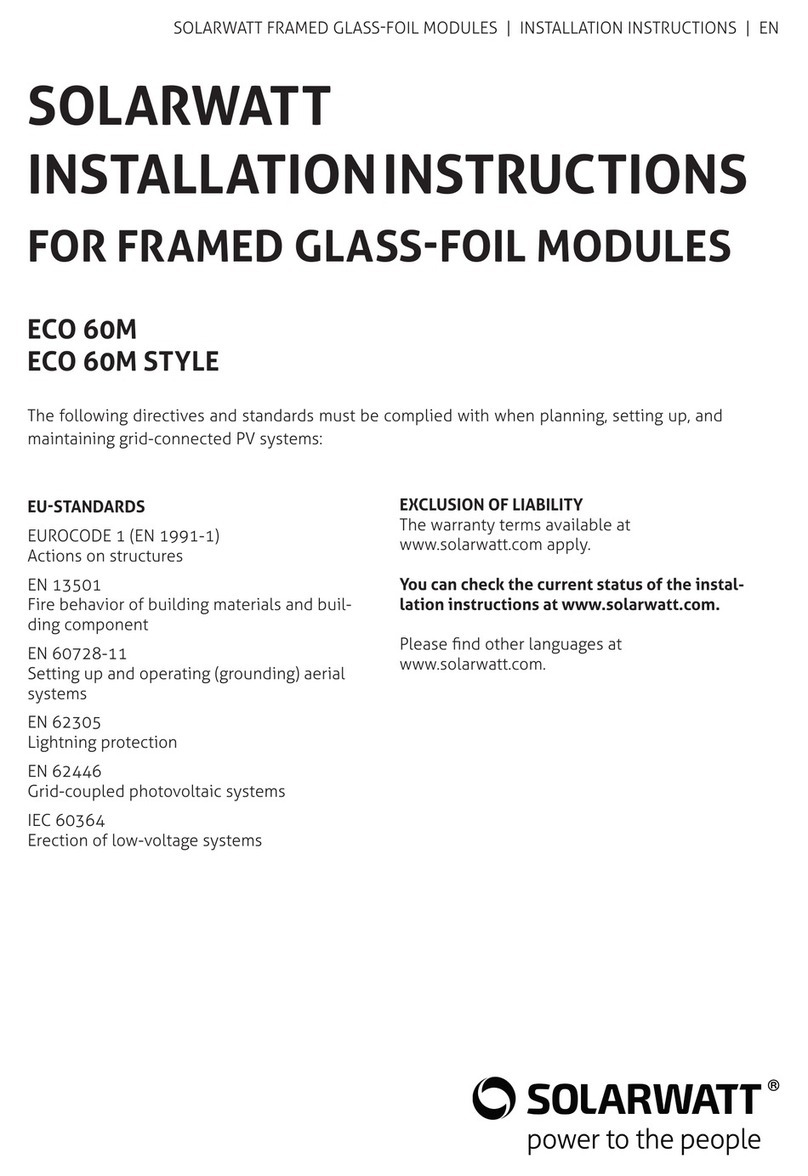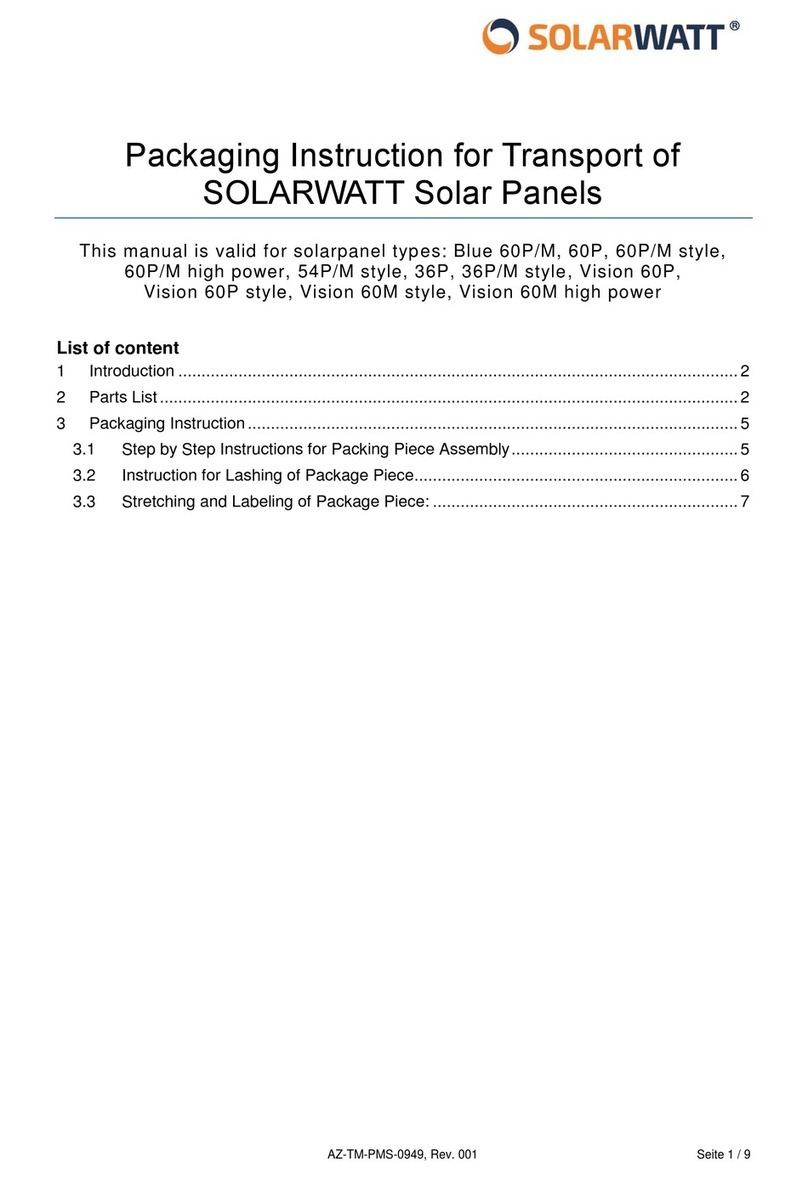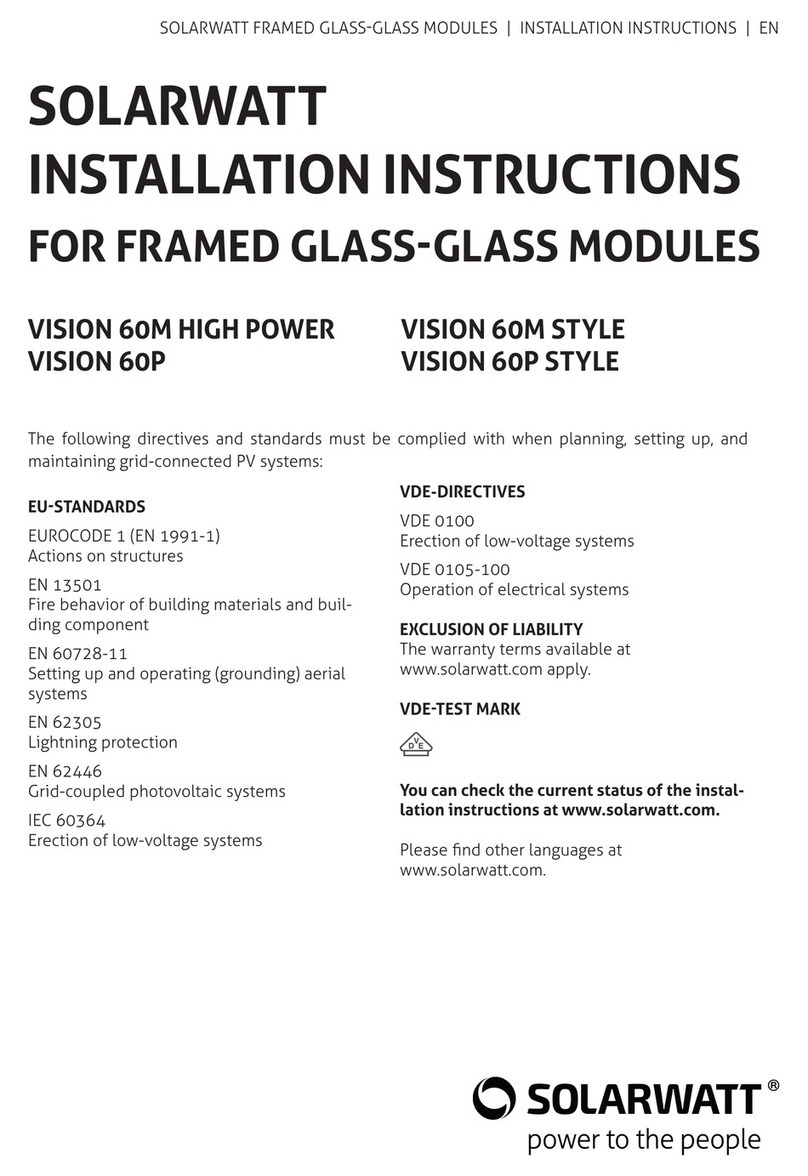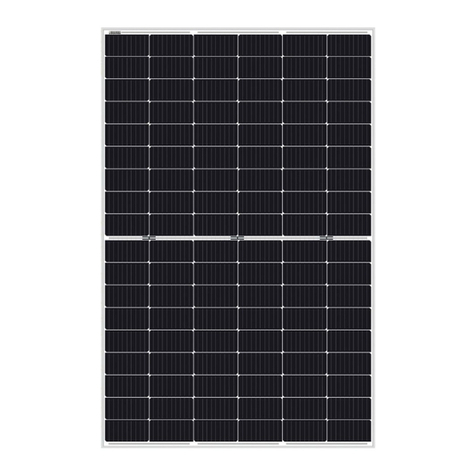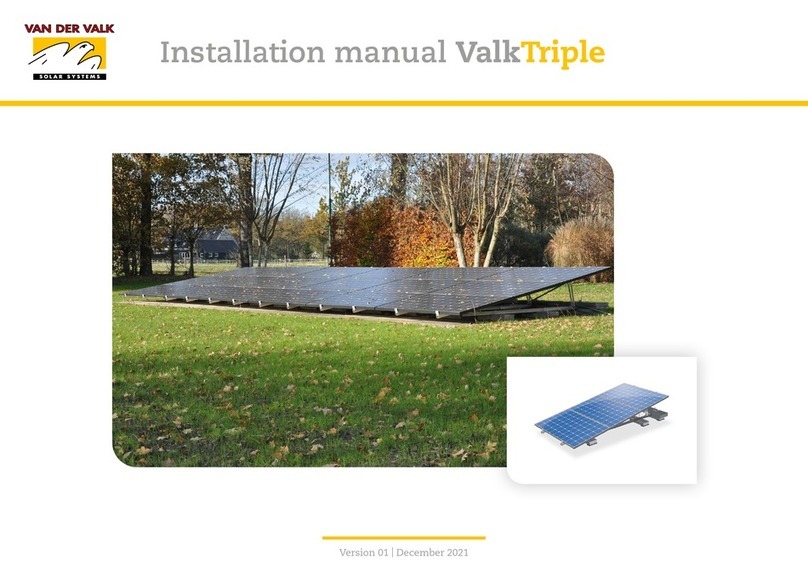
These instructions describe the assembly, connection,
maintenance, and disposal of solar modules. Please read them
carefully and comply with them accordingly.
The installation and electrical connection of photovoltaic
systems may only be carried out by specialist personnel,
who are familiar with this work through their professional
qualifications. For the installation of the other components,
comply with the relevant installation instructions from the
manufacturer. The manufacturer is unable to monitor whether
these instructions and the conditions and methods for instal-
lation, operation, use, and maintenance of the inverter are
complied with.
Incorrect installation can cause damage to property, which
could consequently pose a risk to people. SOLARWATT accepts
no responsibility or liability for losses, damage, or costs
resulting from incorrect installation, operation, use, or
maintenance or losses, damage, or costs which are connected
to any of the above in any way. The SOLARWATT installation
instructions should be made available to the operator as part
of the solar power system documentation and stored by the
operator.
Comply with the guidelines, laws, and regulations valid in the
relevant country when planning, setting up, and operating
grid-connected PV systems. For information on additional re-
quirements, please contact the responsible local authorities
and the network operator.
SOLARWATT solar modules are made from high-quality
materials and high-performance solar cells, and are therefore
extremely reliable. The quality of the solar modules made
exclusively in Germany is ensured by multiple tests carried
out on the products throughout the entire production pro-
cess. SOLARWATT solar modules are VDE-tested and fulfill the
requirements of the extended test standard IEC 61215 Ed.2,
as well as the safety standard IEC 61730. In SOLARWATT's
own research and development department, tests are carried
out using measuring, testing, and environmental simulation
equipment which go above and beyond the current valid
standards and enable us to optimize our products continually.
If treated correctly, your SOLARWATT solar modules will offer
you several decades of service.
SOLARWATT recommends insuring the PV system against
reduced yields or damage with SOLARWATT Full Coverage for
complete security. Further information is available from your
SOLARWATT partner or online at www.solarwatt.de.
Information on the solar module
Detailed electrical and mechanical properties for your specific
module type can be found on the relevant data sheet. The key
technical data under standard test conditions [STC, solar cell
temperature: 25°C, irradiation: 1,000 Watt/m², air mass: 1.5
(corresponds to a sun elevation angle of 41.8°)] can also be
found on the nameplate of the solar module.
CONGRATULATIONS ON THE
PURCHASE Of yOUR SOLARWATT SOLAR MODULE
WARNING
Failure to comply with the installation instructions results in the warranty and
guarantee becoming null and void.
STATUS: 06/2012 |
INSTALLATION INSTRUCTIONS
Rev. 5 | Subject to change | © 2012 SOLARWATT AG
10
